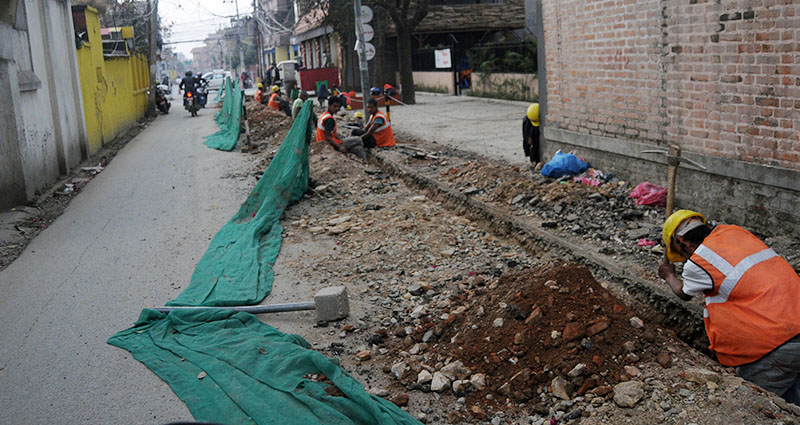Water supply, sanitation coverage remains stagnant
Kathmandu, March 8
The government has made considerable progress over the past decade on the national target of ensuring water supply and sanitation services for all by 2017, said the Ministry of Water Supply and Sanitation.
Census reports show that 85 per cent of Nepalis in 2011 had access to improved water sources, up from 72 per cent in 2001. According to the 2013 Joint Monitoring Programme involving the government, WHO and UNICEF, Nepal has already achieved the Millennium Development Goal target for access to improved water supply.
“While Nepal has commendably reduced rural-urban disparity in terms of access to basic water supply services, it still has to make progress in terms of quality of services. However, coverage has remained stagnant since 2011,” said National Water Supply, Sanitation and Hygiene Sector Development Plan (2016-2030) recently released by Sector Efficiency Improvement Unit under the MoWSS.
As per the statistics of Department of Water Supply and Sanitation (2015), 44.5 per cent households have access to piped water and almost half of these households have private connections. The remaining 55.5 per cent depend on covered wells (38.5 per cent), open wells (7 per cent), and other unreliable sources like river and spring water (10 per cent).
Piped water varies across rural-urban setting. While 58 per cent of population in the urban areas have access to piped water,, only 41 per cent population enjoys the service in rural areas.
By development region, the western region has the highest proportion (61 per cent) and the far-Western region the lowest (34 per cent). In the Tarai, about 80 per cent of households draw drinking water from covered wells and tube wells. Access to piped water is positively associated with household wealth.
Census 2011 data shows considerable disparities in access to water with 34 districts mostly in the flat plains having more than 85 per cent coverage, 38 districts with coverage between 60-85 per cent, and three hill districts in mid-western region with less than 60 per cent coverage. Disparity in sanitation is even more alarming as eight Tarai districts bordering India have less than 30 per cent coverage to basic sanitation while people in 29 districts have more than 62 per cent coverage.
“The sector needs to focus on better targeting with equity and inclusion approaches to secure rights of all citizens for sustainable and affordable WaSH services. It is essential to ensure meaningful engagement of women and socially excluded groups in decision making processes to identify WASH priorities so that their special needs can be addressed,” said report.






